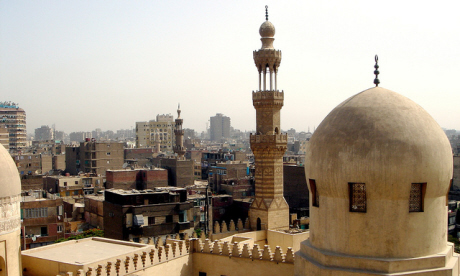
Carolyn McIntyre gives an insiders perspective on some of the issues surrounding the restoration of Old Cairo
The minaret was tall, narrow and pitch black. As we stumbled up behind the caretaker, a voice came from behind: “OK, Carolina, I am going back...” It seemed my claustrophobia-stricken friend Alessandro was in retreat.
But the caretaker was having none of it. Despite his ample girth he was as nimble as a mountain goat. Ignoring the darkness, he zoomed past and grabbed Alessandro. “Sir, you do not go down now, there is light soon”, he said. And so, thankfully, there was.
A visit to Old Cairo is like visiting an interactive museum. Its 4 sq km of alleys, mosques, madrassas (Islamic schools) and markets have seen – and survived – 11 centuries of history. Crammed into that small area are between 430 and 750 classified monuments (depending on who you talk to).
Dating from the ninth-century Fatimid dynasty and added to by Mamluks and Ottomans, Old Cairo had by the late 20th century become seedy and foul-smelling: history in decay. Its wealthy residents had long fled the lack of sewage and running water in favour of leafy suburbs, while the poor remained behind, forgotten in their crumbling dereliction.
But by the mid-1970s it became obvious that Cairo had a unique treasure in its medieval old city, and efforts were begun to protect and restore what remained.
We were eager to visit some of the buildings given a new lease of life, which is how we came to be climbing the minaret of the 14th-century Amir Aqsunqur Mosque.
At the top we clambered onto the narrow platform and gazed across the Old City, including its 12th-century city walls which until recently had been buried under 500 years of accumulated debris. That humungous rubbish dump is now al-Azhar Park, a huge project undertaken by the Aga Khan Trust for Culture (AKTC), and perhaps the only restoration work in the entire city about which there is no dissent. Inaugurated in March 2005, its 30 hectares of green lawn and trees provide a badly needed ‘green lung’ for the city.
But elsewhere controversy has raged over the restoration, with some accusing the authorities of evacuating locals to make way for a tourist-friendly ‘Fatimid Cairo’ – a more inviting tag in the current climate, apparently, than ‘Islamic’.
I spoke to Mohammed al-Merkawi of the AKTC, who insisted that they aimed to integrate the population into conservation projects: “In order to help the residents remain in the area, we offer financial assistance in the form of micro-credit loans, job training and placement programmes.”
And what about the merits of ‘Fatimid’ over ‘Islamic’? “We don’t encourage it [the Fatimid label],” he replied. “The original part of the city has seen several different changes and is not just Fatimid.”
He went on to say that in 2009 the Historic Cities Support Programme, run by the AKTC, will open a museum dedicated to the history of Cairo in al-Azhar Park.
It will outline the saga of the city from the pharaohs to the settlement founded by the Fatimids (al-Qahira) and added to by successive regimes. Strangely for such a historic city, Cairo has no such place where locals and visitors can get an overview of its story; this museum will fill the gap.
And so the old city lives on. Al-Mu’izz ad-Din street is finally getting new sewage pipes; other scaffold-clad buildings await their own unveiling. In the northern part of the Old City, which has always been more commercial than residential, coppersmiths and glassblowers work from the same tiny shops they always have, their work now displayed in elegant boutiques that have sprung up.
As for us, after our adventure up the minaret, Alessandro and I were to be found at a makeshift streetside café. We sipped sweet tea with the owner and settled back to watch ‘Old Cairo’ go about its new business.